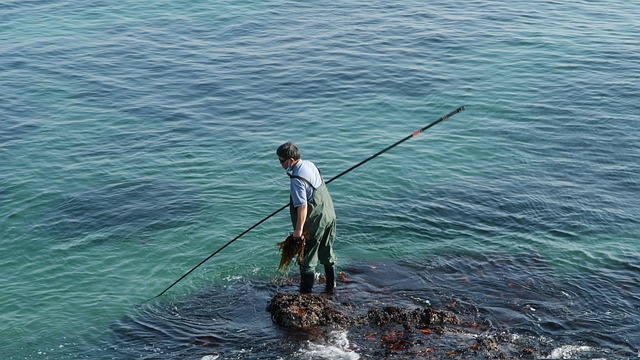
If you ran out of topics on your last fishing trip and ended up arguing for hours about one of the best guitar players in the world, we will lend you a helping hand. We will make an effort to provide you with a more interesting topic as we discuss some of the most commonly used types of fishing. Knowing about different types of fishing, such as spearfishing, angling, and even unusual methods such as kite fishing, will help you impress your fishing companions.

Angling
We are aware that the vast majority of people are aware of this fishing technique. Angling is defined by the use of a hook (also known as an angle), which is attached to the end of the fishing line and allows the fish to be caught. In general, the hook was baited with appropriate bait, which varied from village to village depending on what they intended to fish for and what bait was readily available at the time of the fishing trip.
However, what is most impressive about this fishing technique is how long it has been in use by people throughout history. Fishermen have been employing fishing hooks since the Neolithic epoch, according to historical records.
Hooks used in the early days of fishing
On the Japanese island of Okinawa, archaeologists discovered some of the world’s oldest hooks. Scientists believe the hooks are more than 22,000 years old, according to their estimates. The design of early hooks was quite different from that of the hooks we use today, as you might expect. Shells, animal horns, bone fragments, and small bird beaks were all used to make those primitive hooks, which were also used to catch fish.
Because fishing was less difficult and dangerous than hunting animals, our forefathers worked hard to improve the fishing equipment they used. They began to add weights (sinkers) to the water in order to submerge the fishing hooks in the water. As early as 800 BC, the ancient Greeks took fishing to a whole new level by studying the migration patterns of Tuna and other fish species, among other things.
When it comes to angling, there are two primary methods to choose from: line fishing and rod angling. The first entails lowering a fishing line into the water from a higher elevation, such as a cliff or a bridge, and retrieving it afterwards.
The rod angling method entails using a fishing line with a hook that is attached to a fishing rod to engage in fishing. More than 4,000 years ago, people were making fishing rods out of bamboo, which was harvested from the forest.
Ice fishing is a popular pastime.
This type of fishing has traditionally been practiced in the colder northern hemisphere countries and regions. Ice fishing is similar to regular fishing in that it can be done with both angling and spearfishing techniques. The Inuits are credited with inventing some of the most impressive fishing techniques and equipment in history.
They built a ‘kakivak,’ a pronged spear with two prongs, to spear fish through the ice, which was a first for the people. With a hard central prong and two smaller side arms that were more flexible, this one-of-a-kind spear was extremely effective. Each arm was equipped with a blade that was angled inward to prevent the fish from escaping after it had been speared.
Russian, Latvian, Canadian, and United States ice fishing cultures have all survived the passage of time, even though the equipment and technique have undergone a few modifications. There are ice fishing tournaments held in many of these countries, which attract a large number of fishermen.
Trapping
There is no doubt that the Inuits were excellent fishermen, as evidenced by their ability to catch fish even when the waters were not frozen. They used stone weirs as part of their fishing technique, which was quite effective. The weirs were constructed by stacking stones in a crescent shape on the riverbed by the Inuits.
They built a wall of stones up to a certain height, leaving only a small opening for the fish to swim toward at the bottom. As soon as the fish entered the narrow corridor, the fishermen would strike it with their kakivaks, causing the fish to die.
In medieval Europe, the stone weirs method was widely used to construct dams. For example, in England, because of the stone weirs, some rivers have become impassable due to flooding. Construction of stone weirs in all freshwater habitats was eventually prohibited by the Magna Carta Libertatum, which is considered to be the first legal document in the world.
Although not all fishermen used stone to construct their weirs, a significant number did. Some African tribes used to construct wooden dams because it was less difficult and took less time than other methods. Water levels would drop significantly as a result of the wooden dams, allowing the fishermen to collect the fish using only their bare hands.

Netting
Netting has a long history as a fishing technique, dating back thousands of years when people first began catching fish with nets. Because the nets used were large mashes made of small threads, fishermen were able to catch significantly more fish than they had previously been able to.
Casting nets and gillnets are the two most common types of nets used in net fishing. The nets used in the casting nets method have a mash with a small opening on the upper portion of the net. They were typically used in shallow water, where the mashes would be cast onto a school of swimming fish by the fishermen.
Fishing with gillnets is a method in which fishermen set up their nets in areas where they know fish will swim through. Corks would be tied to the edges of the net to give it buoyancy, and a set of weights would be tied to the middle of the mash to spread it out.
Because the gills of the fish would become entangled in the nets, fishermen had no choice but to simply collect the fish. Netting has evolved into a significant problem in recent years. It does not appear that the future of marine life will be bright because there are no clear regulations governing commercial netting practices.
Kite fishing is a popular sport in the United States.
Even some of the most experienced fishermen may be unfamiliar with this method of catching a fish. Despite the fact that it appears strange, kite fishing has a long and thriving history. This one-of-a-kind technique was developed in the Polynesian islands, where fishermen needed a way to avoid the dangerous coral reefs that surrounded their fishing grounds.
These resourceful fishermen devised effective fishing equipment out of nothing more than the materials available to them. The kites would keep the bait close to the surface of the water, attracting a large number of fish to the bait. Using banana leaves and fishing lines made from braided spiderwebs, the children created simple kites to fly around their homes and communities.
People began to use better materials, such as fern leaves, for the kites as time went on, and baited nooses were used for the fishing lines, which allowed the kites to become better over time. Today’s fishing kites are unquestionably superior because they are constructed of modern materials that allow fishermen to reel in large fish such as Sailfish or even Tuna.
Spearfishing
In fact, evidence suggests that people in France and India were spearfishing more than 16,000 years ago, indicating that the sport has been around a long time. Furthermore, the Native American tribe Hupa has been using this method of catching fish for more than a millennium to catch fish. Because it is mentioned in numerous stories and religious texts, it is possible that this is one of the most popular methods of fishing.

Bowfishing
As the bow and arrow gained in popularity, many tribes began to employ it as a fishing tool as well. Tribes such as the Negritos, who live in the Philippines today, are well-known for their ability to bowfish in shallow water. When they used to fish in shallow, clear waters, they still required a high level of fishing skill to do so successfully. In order to account for the way light refracts when it hits water, the process of aiming is slightly different.
Hand-to-hand gathering
It is not always necessary to have expensive fishing equipment in order to bring home a large number of large fish. There are a few old-fashioned methods of obtaining fish and seafood that require nothing more than your hands. As a result of current conservation concerns, some of these practices have been made illegal in some areas.
Noodling with a catfish
Not everyone is a fan of this fishing technique, and the majority of the fishermen have never used it before either. In order to catch Catfish, the fisherman must place one of his hands inside a Catfish hole and remain in this position until the fish bites the hand.
Despite the dangers involved, this method of fishing is still popular in the American South. Because it has the potential to create hazardous situations for both humans and fish, most states in the United States have prohibited this practice.
Tickling the trout
Perhaps the strangest fishing method you will ever come across is the one described here. While trout tickling may seem unusual, it was mentioned in ancient Greek poetry, and Shakespeare himself had something to say about it.
It is necessary to tickle the Trout’s underbelly until it falls into a sort of paralyzing trance in order to catch it. The time to try this unusual method of fishing may have passed by the time you are considering it. Trout tickling is now prohibited in the majority of countries.
Conclusion
When you look at these traditional fishing techniques, you can see how different they are from one another. One thing they all have in common is that they are all from the same town. Our appreciation for the simplicity and effectiveness of each of these techniques is unwavering. So the next time you go on a fishing trip, keep in mind that it is possible that your equipment is to blame for your failure to catch any fish.